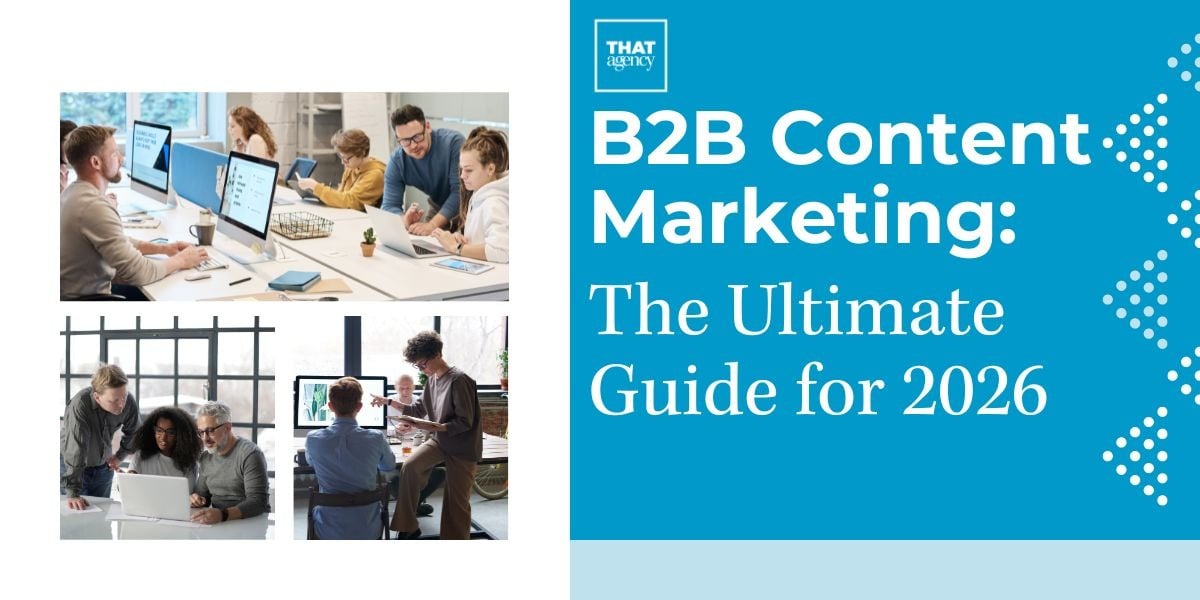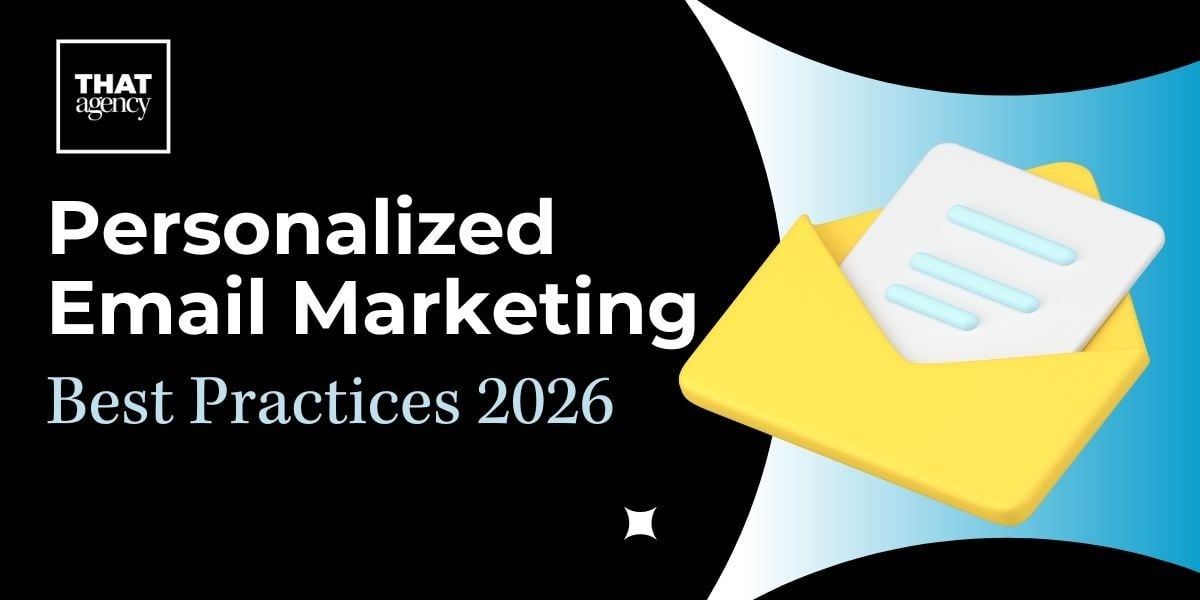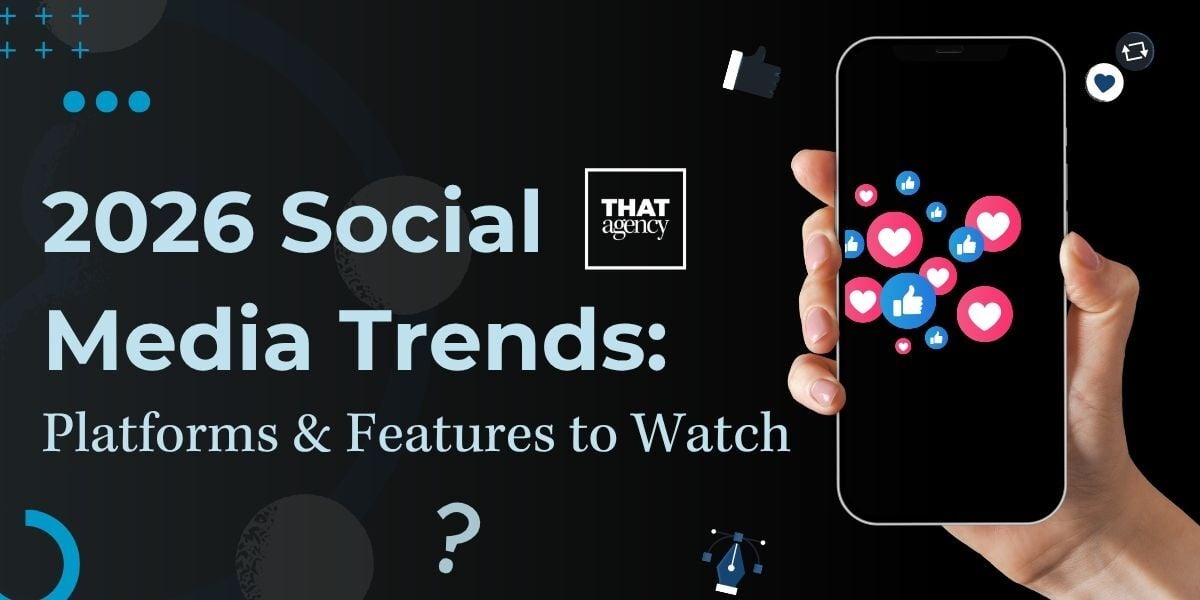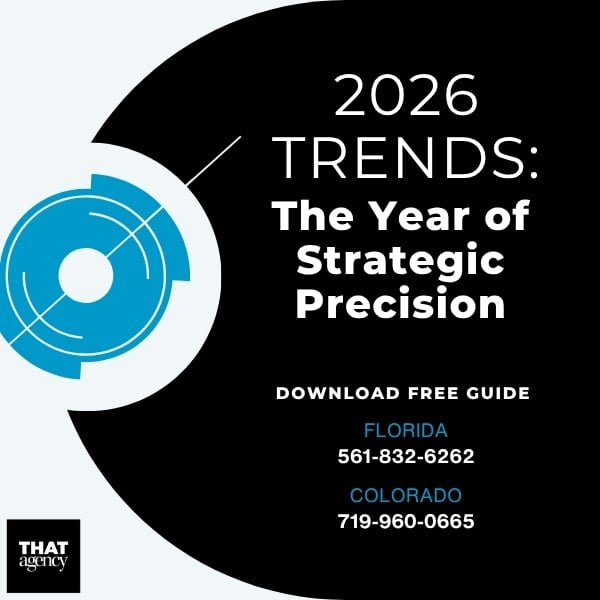In a time where brands are communicating through dozens of platforms, across multiple departments, with varied goals and audiences, the need for digital harmony has never been more urgent. At THAT Agency, we define digital harmony as the balance of productivity, communication, and innovation across all digital touchpoints, where every platform speaks the same language, every asset serves a shared purpose, and every campaign is part of a larger, unified strategy.
This isn’t just a buzzword, it’s the future of digital marketing.
Digital harmony is more than just having a presence on multiple channels. It’s about creating a strategic, synchronized system where your website, social media, email marketing, paid advertising, SEO, content strategy, and even internal communications all work together. It’s the difference between noise and music.
Think of it like an orchestra. If each instrument is playing a different song, it’s chaos. But when they play in harmony, even if they’re playing different parts, the result is something powerful and memorable.
It’s easy to think that as long as you're active online, posting on social media, sending emails, running ads, you’re doing all the right things. But here’s the truth: being everywhere isn’t the same as being in sync.
When your digital marketing isn’t connected, things can start to fall apart fast. This is where many brands struggle, and they might not even realize why.
Let’s break it down.
When your marketing efforts are disconnected, it’s called disjointed marketing. It happens when different parts of your digital strategy don’t match up. Each team, platform, or channel is doing its own thing, with no shared plan.
Here are some real-world examples of what this looks like:
When your digital marketing channels don’t work together, your customers notice. And not in a good way.
Here’s what happens:
That’s a great question. Yes, it’s okay for the style and format of your content to vary by platform. A tweet is going to look different than a blog post or an email.
But the core message, the main idea or promotion you’re sharing, should always be consistent.
For example:
This keeps your audience focused and reinforces your message everywhere they see you online.
With digital harmony, every part of your marketing strategy works together. That means:
When all your digital pieces are in sync, your brand feels stronger, clearer, and more trustworthy. That’s when you stop struggling and start growing.
Coming up next: We’ll show you how THAT Agency helps brands build this kind of harmony, and how you can get started too.
How THAT Agency Helps Brands Stay Aligned, Consistent, and Forward-Thinking
Creating a strong digital presence isn't just about showing up online, it’s about showing up with purpose. When all your digital pieces are connected, your message is clearer, your team works better together, and your marketing efforts make a much bigger impact.
At THAT Agency, we help brands achieve what we call Digital Harmony. It’s the balance of productivity, communication, and innovation that keeps everything moving in the same direction. To do that, we build every strategy around three core pillars.
Let’s walk through each one, what it means, and why it matters.
What does this mean? It means your digital marketing shouldn’t be scattered across different departments, random content calendars, or conflicting goals. Instead, everything should be planned out from a central strategy that keeps everyone on the same page.
Think of it like planning a big trip with your friends. If everyone picks a different destination and books their own flight, you’ll all end up in different places. But if one person plans the trip and everyone follows the same itinerary, the experience is smooth and exciting.
In marketing, it works the same way. When your website content, social media, ads, email campaigns, and blog posts are all tied to one plan, your team knows what they’re doing and why. This saves time, avoids duplicate work, and helps your brand show up stronger and more consistently.
Why is centralizing our strategy so important? Because without it, your marketing feels random. You may post content regularly, but it won’t build toward a goal. A centralized strategy keeps your message clear and your efforts focused. At THAT Agency, we create this unified strategy so that every piece of your marketing supports your bigger business objectives, whether that’s brand awareness, lead generation, or increased sales.
Why does communication matter so much? Because without clear communication, both internally and externally, your message can get lost, or even worse, feel inconsistent. And inconsistent brands are hard for customers to trust.
Let’s start with internal communication. Inside your company, everyone should understand your brand’s voice, goals, and current campaigns. That means your sales team knows what marketing is promoting, your customer service team understands the tone of your social media, and your designers and writers are working toward the same end result.
At THAT Agency, we help businesses set up this kind of internal alignment through content planning, shared messaging documents, and team check-ins. That way, everyone is pulling in the same direction.
Now, let’s talk about external communication. This is about how your message appears to your audience, on every platform. Let’s say your blog this week is about “Ecommerce Conversion Tips.” That same idea should show up:
Even though the format and language change for each platform, the message stays the same. This kind of repetition builds familiarity, and familiarity builds trust.
Isn't that repetitive? Not really! In marketing, repetition is a good thing. People often need to see or hear something several times before they take action. When your messaging is aligned, you're helping your audience understand, remember, and connect with your brand.
Is it good to try new tools and platforms?
Absolutely, but only when they serve a purpose. There are tons of new technologies, apps, and AI tools popping up every month. But jumping on every new trend without a plan can actually make your marketing messier, not better.
Innovation without strategy = noise.
That’s why, at THAT Agency, we focus on innovation that fits your goals. We ask:
If the answer is yes, then we’ll find the best way to work it into your overall strategy.
For example:
How do I know if I should try a new tool or trend? Ask yourself: Does this help me reach my goals? If a new tool or platform just adds more work or confusion, it’s probably not worth it. Innovation should make your marketing simpler, smarter, and more connected, not more complicated.
When your marketing is:
...that’s digital harmony. And that’s where the magic happens.
At THAT Agency, these three pillars guide everything we do. We don’t just help clients grow, we help them grow together, with a marketing ecosystem that’s smooth, smart, and aligned from start to finish.
Need help building your own harmonious marketing strategy? Let’s chat. We’ll help you bring all the pieces together, so your brand can shine across every platform.
What a Product Launch Looks Like With, and Without, Digital Harmony
By now, you’ve heard the term digital harmony. But how does it actually work in the real world?
To make it easier to understand, let’s walk through a scenario that almost every business faces at some point: launching a new product or service. This could be anything from a new app or online course to a new clothing line or subscription plan. The way you market that launch can have a big impact on how successful it is.
Let’s look at two different ways this could play out, one without digital harmony and one with it.
In this version, your team is excited to promote a new product, but the approach is unorganized and disconnected. Here’s what that might look like:
Each part of the marketing effort exists, but none of it fits together. Everyone is doing their own thing, and no one’s really sure what the others are doing.
This often leads to:
Even if your team works hard and creates good content, the lack of connection weakens the entire campaign.
Now, let’s imagine the same product launch, but this time it’s handled with digital harmony in mind. Here's how that process looks:
Everything works together. Each piece of the campaign reinforces the others. When your customer sees the product on your Instagram feed, then clicks through an email, then visits the landing page, they’re met with the same message, look, and tone every time.
This creates:
Instead of working in silos, your team works as a single unit. Instead of disconnected ideas, your marketing becomes a single, focused message.
Isn’t it harder to plan everything like this? It does take more planning upfront. But in the long run, it actually saves time and reduces stress. Instead of last-minute scrambles and mixed messages, everyone knows what they’re doing from the beginning.
What if I don’t have a big team? You don’t need a huge team to achieve digital harmony. Even with a small team, having a clear plan and sharing it across roles makes a big difference. It’s more about coordination than size.
Do I have to say the exact same thing on every platform? No, not exactly. You can adjust the language, format, and style to fit each platform, but the core message should always be the same. That’s what creates a consistent experience.
What tools help with this? A shared content calendar, brand style guide, internal briefs, and collaboration tools like project management software can help keep everyone aligned. At THAT Agency, we help clients set up these systems so the process runs smoothly from start to finish.
When your marketing channels work together, the results are stronger. Instead of disconnected messages, you create one powerful story across every platform.
Digital harmony turns your product launch from a collection of separate efforts into a unified campaign. It makes your brand more recognizable, your message more effective, and your marketing more successful.
At THAT Agency, this is what we do best. We help brands turn big ideas into clear, connected strategies that lead to real results, no matter how many channels you’re using.
Ready to launch your next campaign with total clarity and confidence? Let’s build a strategy that brings every part of your digital presence together.
Bringing Every Piece of Your Digital Strategy Together, The Right Way
Digital marketing isn’t just about doing more. It’s about making sure that everything you do is working together. At THAT Agency, we don’t just manage separate services like blog writing, paid ads, and social media, we bring them all into one connected strategy. That’s what we mean by digital harmony.
So, how do we actually make that happen? Here’s a look at our step-by-step process, and how it helps brands like yours get better results across every channel.
What we do: We start by taking a close look at what you’re already doing. That includes your website, blog, social media posts, email marketing, ad campaigns, SEO efforts, and more.
We look for areas where your marketing might be disconnected or out of sync. For example:
By identifying where things feel scattered or siloed, we uncover the gaps that could be holding your marketing back.
Why this matters: You can’t fix what you don’t see. This audit gives us a clear understanding of what’s working, what’s not, and where things can be improved.
What we do: Next, we build a centralized messaging and content strategy. This becomes the core plan that guides all of your marketing efforts moving forward.
We answer questions like:
This isn’t a one-size-fits-all plan, it’s tailored to your brand, your voice, and your goals.
Why this matters: Without a strategy, marketing can feel random or reactive. A clear plan gives your entire team direction and confidence. It also ensures every piece of content, from your next Instagram caption to your next newsletter, is building toward something bigger.
What we do: Once the strategy is in place, our team gets to work bringing it to life. This includes:
And we don’t work in silos. Our writers, designers, strategists, and media buyers all communicate and collaborate, so nothing feels disconnected.
Why this matters: Execution is where many brands fall short, not because they’re not working hard, but because their efforts are spread too thin or done in isolation. At THAT Agency, we make sure your digital marketing isn't just busy, it's aligned.
What we do: We don’t stop once your campaigns are live. In fact, that’s just the beginning.
We continuously monitor performance across all platforms, not just looking at one ad or one post, but at how everything is working together. If something’s not performing well, we adjust it. If one message is resonating with your audience, we build on it.
We track and improve:
Why this matters: Marketing isn’t set-it-and-forget-it. Your audience, the platforms you use, and your business goals can all change. Continuous optimization ensures your strategy evolves along with them, and stays effective.
At THAT Agency, you’re not just getting a blog writer, or a social media manager, or an ad strategist, you’re getting a team that works together to make sure every part of your digital marketing is pulling in the same direction.
That’s what makes digital harmony powerful. It’s not about doing a lot of different things. It’s about doing the right things, together.
Today’s Audiences Expect More, and Notice Everything
Marketing has changed. Your audience is more informed and more selective than ever before. They notice when your messaging is inconsistent. They can tell when your social posts don’t match your website. They recognize when your brand voice shifts from email to email. And all of that affects how much they trust you.
Digital harmony solves that. It gives your audience a smooth, reliable experience, one that builds confidence and encourages action.
Here’s why that matters now more than ever:
Brands that win today aren’t just the ones shouting the loudest. They’re the ones with the clearest, most consistent message, shared across every digital touchpoint.
Digital harmony is how you get there.
Digital harmony isn’t a destination, it’s a discipline. It takes intention, communication, and a willingness to tear down silos and build something more unified, more strategic, and more powerful.
At THAT Agency, we specialize in crafting marketing ecosystems where every moving part works together. Because when content, platforms, and teams are in sync, growth isn’t just possible, it’s inevitable.
Ready to turn up the volume on your digital presence? Let’s make your brand sing.
Tags: 2025 Marketing Trends

B2B Content Marketing: The Ultimate Guide for 2026

Personalized Email Marketing Best Practices 2026: Personalization That Actually Works
.jpg)
Generative Engine Optimization (GEO): What It Is & What it Means for Marketing

2026 Social Media Trends: Platforms and Features to Watch

The Role of AI in Content Creation: From Blog Posts to Ad Copy
700 S. Rosemary Ave.
Suite 204-707
West Palm Beach, FL 33401
P: 561.832.6262
F: 561.832.7707

